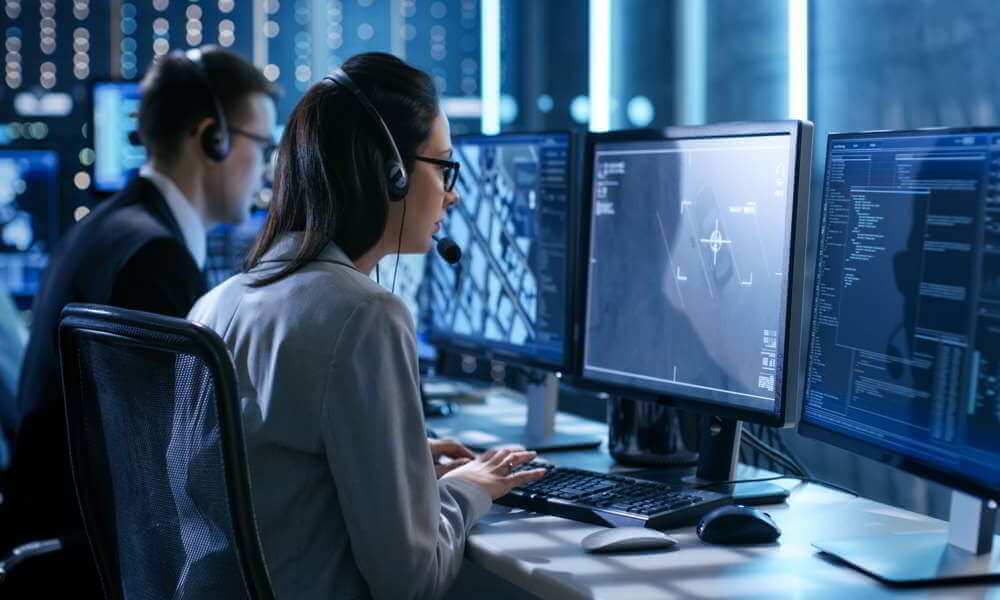

GPS Guard Tracking and the Modern Security Company
What’s your worst nightmare as the owner of a contract security guard company? I imagine it might have something to do with your biggest client phoning you up at 3 a.m. to scream at you about a huge security breach and to tell you your guards are nowhere to be seen. So how do you know if your guards are at their posts and following post order rather than down at the coffee shop getting a quick fix?
One solution is, of course, making sure that you have sufficient supervisors to handle spot checks. There are many studies that show that people actually have to believe they are going to get caught in order to discourage bad behaviour. So that means that you can’t simply have a supervisor come around at a fixed time or too infrequently, they need to be out there all of the time and that means you need to pay them all of the time. This can be a huge overhead that you just don’t need in today’s highly competitive market.
Another alternative is to use technology to make sure you have operational awareness without having to pay the huge overhead of a large layer of supervisors. This is really a combination of a comprehensive checkpoint system and large scale tracking system. Today I am going to concentrate on the large scale system, GPS.
What can I get from GPS
While most people who have ever used a smartphone will have at least a passing acquaintance with GPS, lets look in a little more at some of the concepts you should be familiar with. Here are some common terms you will need to understand when discussing GPS and navigation in general:
- A fix is a single position measurement. In consists of at least a latitude, a longitude and a time. In many cases it may have additional information such as altitude, speed and approximate fix quality.
- A track is a list of fixes that is created as the GPS receiver moves around and shows historically where the unit has been.
- A route is a list of waypoints that show you where you should be going in the future as opposed to a track which shows where you actually went. In general, GPS can be used to tell where you are right now, where you have been and where you plan to be in the future and how you might get there.
Making GPS useful for the Security Industry
When talking about GPS in the security industry, we are mostly interested in where officers are right now and where they have been in the past. In order to accomplish this in a meaningful way, you really need each individual officer’s tracking device or receiver to report his position back to your control center in a real time fashion. This can often be more challenging than it seems as guards often work in environments where good wifi or mobile networking is not available or is spotty at best. So, at the very least, you need a system that will attempt to push location data whenever it can and will store it locally on the device when it’s not possible to transmit and then send it whenever a connection can be established.
Next you need a management system that can search for guards and show both their positions in real time as well as historical tracks. It is important that you can search this data as the number of tracks generated quickly builds up when you use a tracking system in real life. When a customer calls to complain about an officer not being on post, you need to be able to find his or her track as easily as possible. You also need a system that can find where a particular officer was at a particular point in time so it is critical that there is a way to enter some time in the past and find out just where he was on a track. Further, you probably want to be able to show how the track progressed over time so some kind of animation or sliding controller is needed.
What’s more, you ideally need a system that can also plot just where and when a particular incident happened. Let’s say your guard reports an incident and takes a picture of it. Clearly it is more valuable if your central system can show you where and when that occurred.
In short, you need more than GPS, you need a complete guard management system or guard tour system that will allow you to look at an officer’s location any time in the past from a centralized console or web based view as well as what they were doing at that particular time.
Some technical detail about GPS
You might be interested in a little more detail on just what GPS is. GPS or the Global Positioning System is a project that was launched by the US military in 1973 to initially make navigation easier for itself. It was later opened up to the public in the 1980’s though it is still controlled by the US military and they have the power to degrade service or cut if off completely if it serves their strategic needs.
It consists of a constellation of 31 satellites that transmit signals that allow for GPS receivers to find their position at any place on the planet. The satellites orbit in a medium earth orbit at an altitude of around 12,600 miles.
In order to find your position, you need a GPS receiver and it generally needs at least four satellite signals to get a fix though there are generally at least six within line of sight of any position on earth at any given time. More satellite signals generally leads to better accuracy.
Limitations of GPS
When using GPS as a key technology in your business, it is important to understand not only what it can do but also what limitations it has. Since a GPS receiver needs to detect a relatively weak signal that is transmitted from a great distance, it works best when the receiver has a clear view of the sky. In order to get a fix, the unit needs to receive from at least four satellites so a fairly wide arc of clear reception is needed. This means that buildings and trees can influence the accuracy of the fix. GPS generally does not get a fix indoors at all. In order to get around this to some extent, modern smartphone’s use other techniques such as known wifi signals to help approximate position when they do not have a GPS signal. I have written about smartphone GPS accuracy in an earlier blog here if you like to find some more specific details on my accuracy experiments.
New Kugadi Posts

The hidden challenges of remotely managing operations and why smart automated security technology is so important in mitigating risks.

By using a data-driven approach, companies have a holistic view of how areas perform and can find repeat problem areas to take action. They can better understand if more lighting is needed, extra guards, etc.

Looking at the data you collect greatly helps you run your security guard company